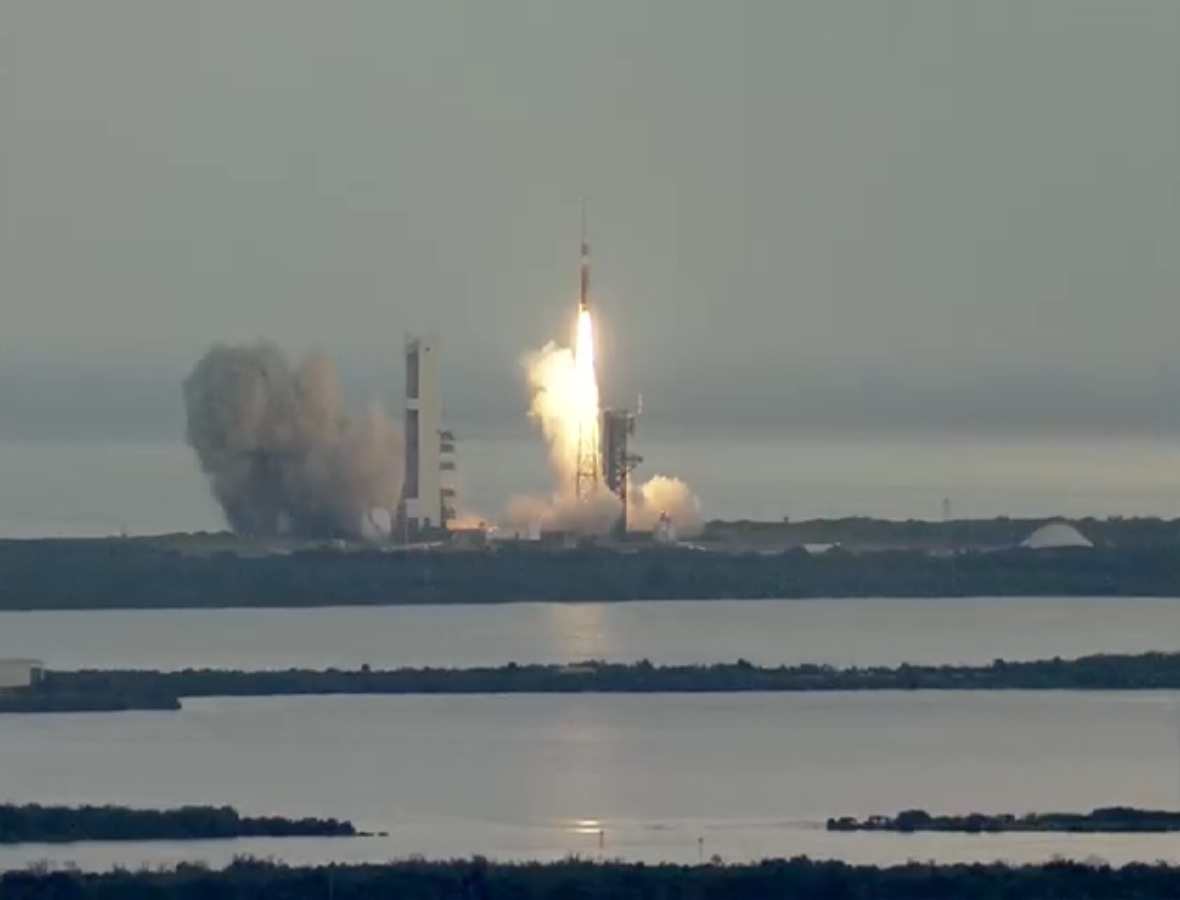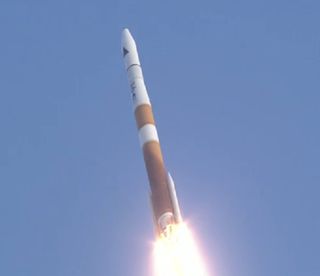
The United States Air Force has launched three satellites designed to help the country keep better tabs on its valuable space assets, as well as those of other nations.
The three spacecraft — two of which are fully operational and one of which is an experimental satellite — blasted off today (July 28) from Florida's Cape Canaveral Air Force Station at 7:28 p.m. EDT (2328 GMT), riding toward a near-geosynchronous orbit atop a United Launch Alliance Delta 4 rocket.
"These operational and experimental systems will enhance the nation’s ability to monitor and assess events regarding our military and commercial systems," Secretary of the Air Force Deborah Lee James said in a prelaunch statement. "In essence, they will create a space neighborhood watch capability." [Top 10 Space Weapons]

The operational satellites are part of the Air Force's Geosynchronous Space Situational Awareness Program (GSSAP), which had been classified until February. The two spacecraft will help identify and track man-made objects in the geosynchronous belt, where spacecraft complete one orbit in the same amount of time it takes Earth to rotate once.
Satellites in this region, which lies at an altitude of about 22,300 miles (35,900 kilometers), therefore hover over one spot on the planet. The geosynchronous belt houses some of the United States' most important communications and reconnaissance satellites.
“We support the peaceful use of space for all countries, but we believe it is necessary to increase our ability to detect and attribute any threatening or disruptive actions," said Gen. William Shelton, the commander of Air Force Space Command.
The experimental satellite is called ANGELS (short for Automated Navigation and Guidance Experiment for Local Space). This spacecraft will stay close to the Delta 4's upper stage a few hundred kilometers above the geosynchronous belt, maneuvering around the rocket body with increasing degrees of automation and independence from its human handlers, Air Force officials said.
Get the Space.com Newsletter
Breaking space news, the latest updates on rocket launches, skywatching events and more!
These maneuvers will begin at a distance of about 31 miles (50 km) from the upper stage, then continue as ANGELS gets closer and closer, eventually coming within just a few kilometers of the rocket body, officials said. The experiments are slated to last one year.
"These experiments will enable future satellite systems to achieve a more rapid and improved space situational awareness capability with fewer operators, while maintaining safety as the top priority," said Maj. Gen. Thomas Masiello, commander of the Air Force Research Laboratory, which heads the ANGELS program.
Today's launch was originally scheduled for Wednesday (July 23), but a problem with ground support equipment forced a one-day delay, United Launch Alliance officials said. Bad weather on Thursday, Friday and Saturday (July 24-26) then pushed the liftoff back several more times.
Follow Mike Wall on Twitter @michaeldwall and Google+. Follow us @Spacedotcom, Facebook or Google+. Originally published on Space.com.
Join our Space Forums to keep talking space on the latest missions, night sky and more! And if you have a news tip, correction or comment, let us know at: community@space.com.

Michael Wall is a Senior Space Writer with Space.com and joined the team in 2010. He primarily covers exoplanets, spaceflight and military space, but has been known to dabble in the space art beat. His book about the search for alien life, "Out There," was published on Nov. 13, 2018. Before becoming a science writer, Michael worked as a herpetologist and wildlife biologist. He has a Ph.D. in evolutionary biology from the University of Sydney, Australia, a bachelor's degree from the University of Arizona, and a graduate certificate in science writing from the University of California, Santa Cruz. To find out what his latest project is, you can follow Michael on Twitter.









